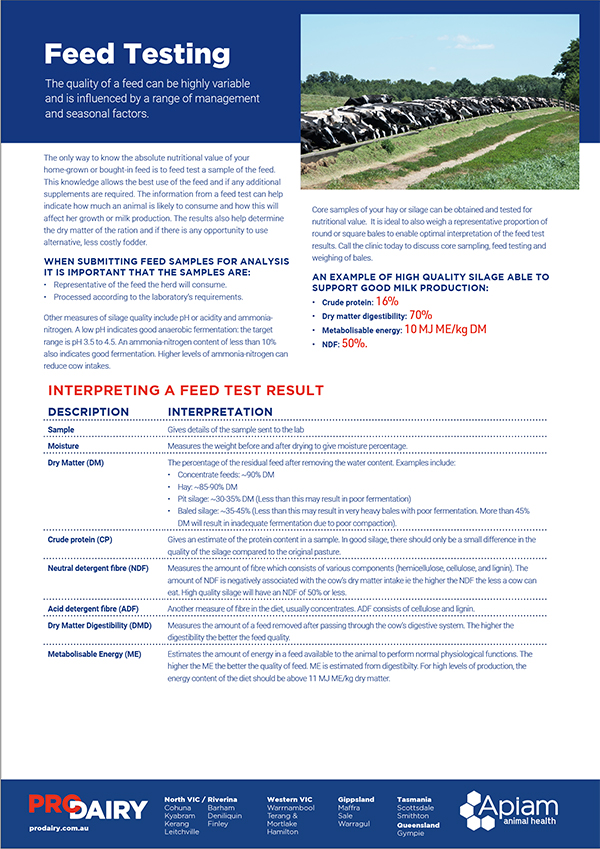The quality of a feed can be highly variable and is influenced by a range of management and seasonal factors.
The only way to know the absolute nutritional value of your home-grown or bought-in feed is to feed test a sample of the feed. This knowledge allows the best use of the feed and if any additional supplements are required. The information from a feed test can help indicate how much an animal is likely to consume and how this will affect her growth or milk production. The results also help determine the dry matter of the ration and if there is any opportunity to use alternative, less costly fodder.

WHEN SUBMITTING FEED SAMPLES FOR ANALYSIS IT IS IMPORTANT THAT THE SAMPLES ARE:
- Representative of the feed the herd will consume.
- Processed according to the laboratory’s requirements.
Other measures of silage quality include pH or acidity and ammonia-nitrogen. A low pH indicates good anaerobic fermentation: the target range is pH 3.5 to 4.5. An ammonia-nitrogen content of less than 10% also indicates good fermentation. Higher levels of ammonia-nitrogen can reduce cow intakes.
Core samples of your hay or silage can be obtained and tested for nutritional value. It is ideal to also weigh a representative proportion of round or square bales to enable optimal interpretation of the feed test results. Call the clinic today to discuss core sampling, feed testing and weighing of bales.
An example of high quality silage able to support good milk production:
An example of high quality silage able to support good milk production:
- Crude protein: 16%
- Dry matter digestibility: 70%
- Metabolisable energy: 10 MJ ME/kg DM
- NDF: 50%.
INTERPRETING A FEED TEST RESULT
DESCRIPTION
INTERPRETATION
Sample
Gives details of the sample sent to the lab.
Moisture
Measures the weight before and after drying to give moisture percentage.
Dry Matter (DM)
The percentage of the residual feed after removing the water content. Examples include:
- Concentrate feeds: ~90% DM
- Hay: ~85-90% DM
- Pit silage: ~30-35% DM (Less than this may result in poor fermentation)
- Baled silage: ~35-45% (Less than this may result in very heavy bales with poor fermentation. More than 45% DM will result in inadequate fermentation due to poor compaction).
Crude Protein
Gives an estimate of the protein content in a sample. In good silage, there should only be a small difference in the quality of the silage compared to the original pasture.
Gives an estimate of the protein content in a sample. In good silage, there should only be a small difference in the quality of the silage compared to the original pasture.
